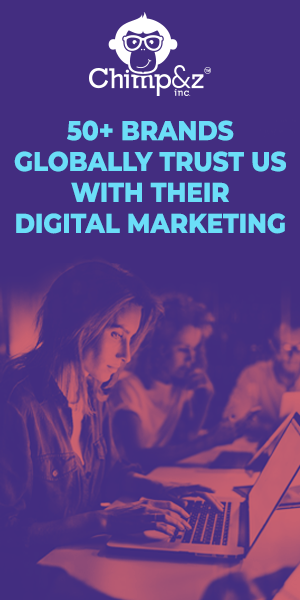Succeeding in social media marketing requires resilience as the landscape constantly evolves. A few years ago, our primary concern was unexpected algorithm updates. Today, we face a shift in user behavior and a new generation of social media users with specific needs. To help with this, you can take advantage of social media marketing services in India. They will ensure that your brands are fully committed to optimizing their social media strategy.
- Short-form video is still the king
Short-form videos, especially Instagram reels, will continue to dominate in 2024, making Instagram a top choice for brands. With 62% of users researching products on the platform, reels are prioritized by the algorithm. When planning a short-form video strategy, avoid blindly following trends; instead, focus on creating content aligned with your brand identity and audience preferences
- YouTube is still alive and kickin’, kinda
Even as short-form vertical videos take center stage, YouTube, the world’s second-most visited website, remains a formidable contender. It attracts diverse demographics, with one in three baby boomers engaged. To stand out, ensure your video adds value, is accessible with subtitles and captions, features a compelling keyword-driven title, and boasts an attention-grabbing thumbnails.
- Social Commerce is set to soar
Social commerce has long been a focus for brands and platforms, shaping consumer habits even pre-pandemic. In 2018, 30% were open to buying through social media. Amidst factors like inflation and ESG awareness, consumer expectations are shifting.
When selling on social media, you want to be posting more consistently. This strategy requires producing content with shoppable links posted in more places.
- Power lies in the hands of content creators
Did you know that a whopping 87% of consumers still put their trust in reviews and recommendations from family and friends who’ve had a free brand experience? Moreover, 71% trust bloggers, vloggers, or social media stars who’ve received the same treatment. Take a moment to let that sink in.
While social media marketers invest significant effort in crafting beautiful content and messages, potential clients often scroll past them. Why? Because it’s the brand talking about their product or service, and there’s inherent bias.
In contrast, individuals who have actually used a product or service are seen as more trustworthy since their opinions are perceived as unbiased. This authenticity is particularly valuable, standing out from the more obvious landscape of paid partnerships and sponsorships.
- Prioritize community over followers
On social media, the consistent message is to cultivate a community. It might seem vague, but 66% of branded communities report an impact on customer retention. According to the Global Web Index, 76% of internet users engage in online communities. A strong community is where brands find their most loyal customers, the ride-or-die, first-to-support individuals.
- Narrow-targeted social media ads
According to a PWC study, targeted advertising appeals to 31% of respondents, especially catching the interest of 43% among Gen-Z. In terms of influencing pre-purchase decisions, 37% prefer ads directly linking to offers for their favorite brand, while 34% are attracted to sponsored ads on social media platforms.
While broad targeting is good for brand awareness, it’s crucial to consider budget constraints, market saturation, and economic conditions. A strategic approach involves initially concentrating efforts on retargeting prospects and identifying a lookalike audience.
- LinkedIn is expanding beyond jobs and professional content
LinkedIn has evolved beyond its formal image and is now more akin to a rebellious Millennial—just kidding. It’s no longer solely focused on job-related posts, job searches, or work-related grievances.
The platform has become a space for genuine and relatable content. Users are showcasing their authentic selves, sharing insights into managing tasks, taking mental health breaks, and expressing challenges in finding inspiration. LinkedIn is transforming into a more personal platform, featuring posts offering advice on a wide range of topics.
- SEO on social media will be more powerful than hashtags
Google’s Senior Vice President Prabhakar Raghavan shared that nearly 40% of young people, when seeking a place for lunch, skip Google Maps or Search and turn to TikTok or Instagram. Considering this and the factors impacting the Instagram algorithm, it’s evident that relying solely on hashtags is no longer sufficient.
- The surge in AI-generated content
The ascent of social media platforms has heightened the need for top-notch, compelling, and personalized content. Enter AI-generated content, a tool that empowers marketers to produce content swiftly and effectively, resulting in time and resource savings. Social media marketers must grasp the advantages and limitations of AI-generated content, employing these tools judiciously and ethically. By harnessing AI-generated content, marketers can enhance efficiency and attain their objectives, all while preserving the authenticity and creativity of their content.
- Gen-Z-driven user-generated content is on the rise
Gen-Z, the generation known for documenting their lives and sharing everything on social media, particularly favors short-form video content and frequently posts about the brands they use or admire. Therefore, user-generated content generated by Gen-Z is poised to gain even more popularity in 2024.
Instagram and TikTok users from Gen-Z, who willingly share their opinions after trying a service or product, are highly valued by brands. Through this user-generated content, brands can expand their follower count, build a community, increase brand awareness, and enhance engagement rates.
While there are plenty of trends to explore, navigating them can be tricky. To avoid getting lost, consider enlisting the services of a Social Media Agency. Their expertise can make a significant difference for your brands.
















